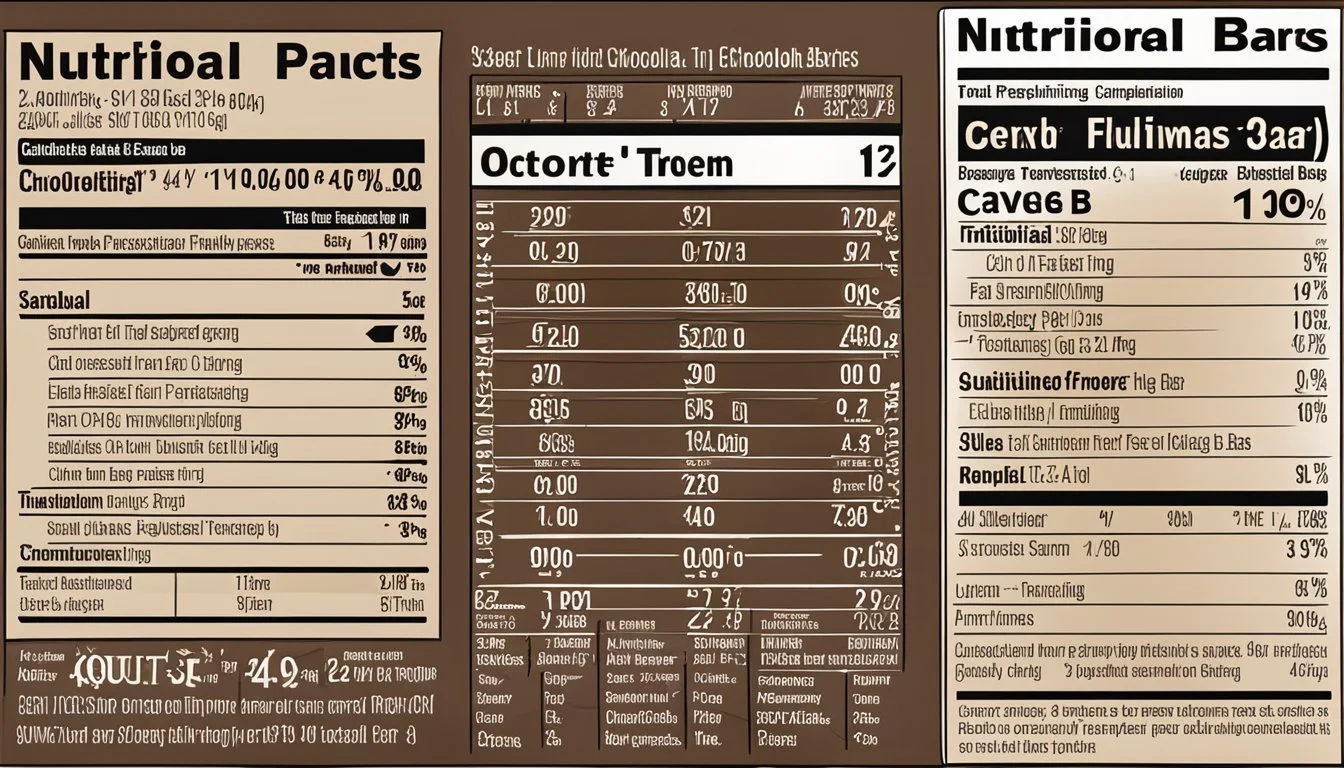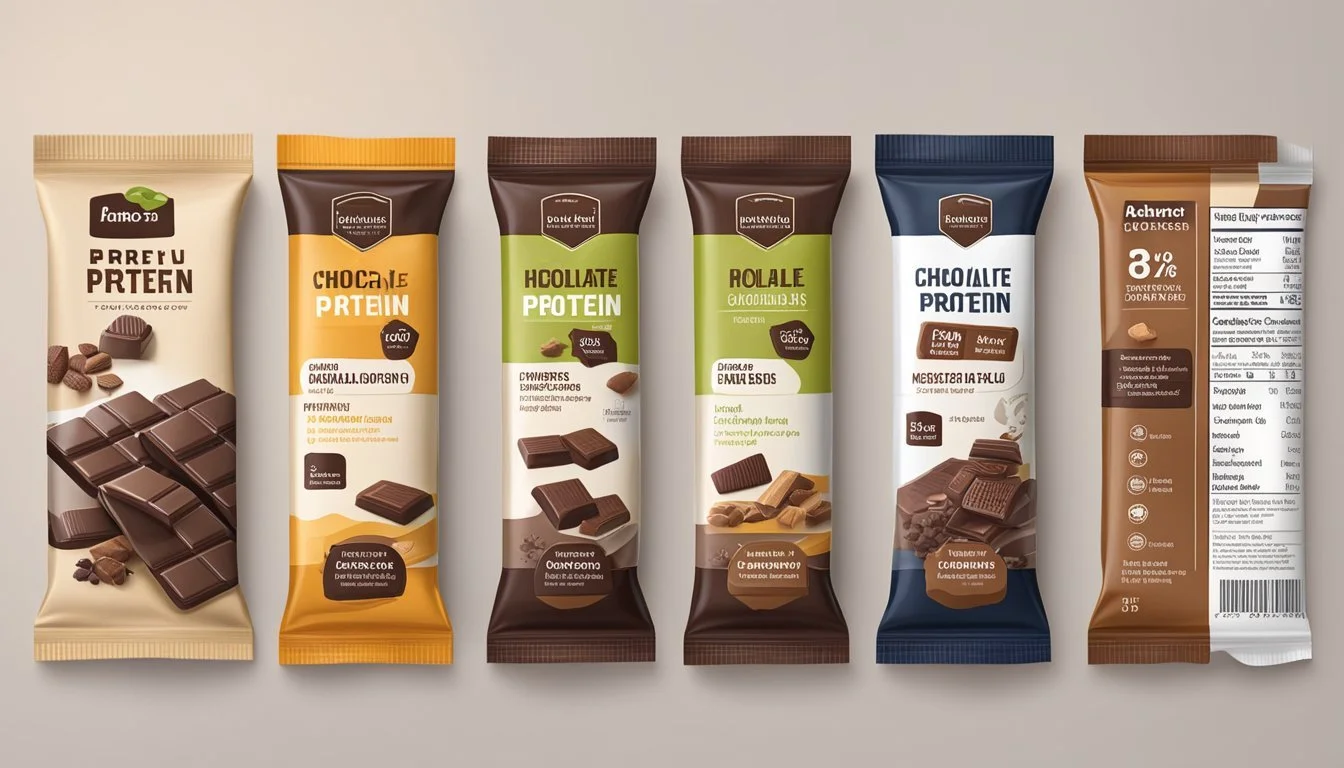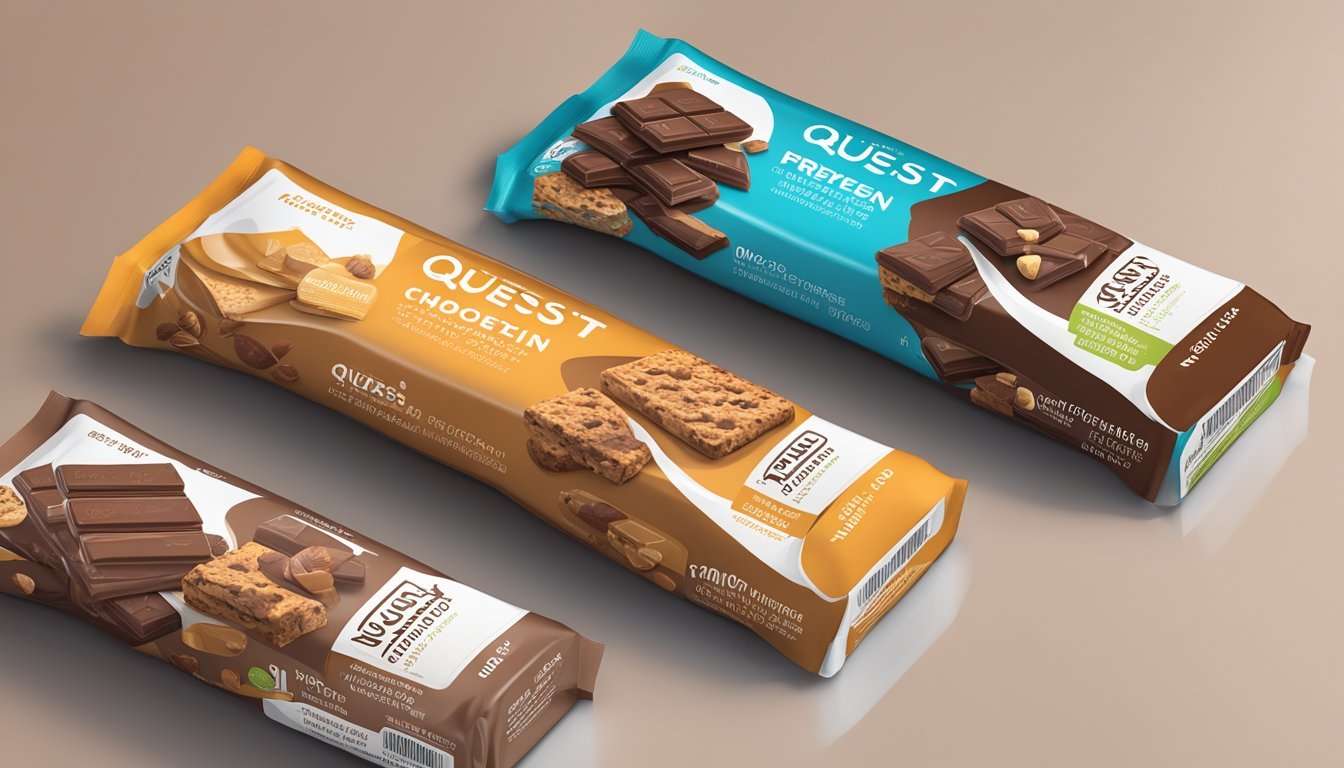Quest Chocolate Protein Bars Nutrition Facts & More
Essential Facts for Health-Conscious Consumers
Quest chocolate protein bars offer a convenient and tasty way to boost protein intake while satisfying sweet cravings. These bars typically contain 20-21 grams of high-quality protein, making them an excellent choice for those looking to meet their daily protein goals. With low net carb counts and minimal added sugar, Quest bars align well with ketogenic and low-carb dietary approaches.
The bars feature a blend of milk protein isolate and whey protein isolate, providing a complete amino acid profile. Quest uses alternative sweeteners like erythritol and stevia to keep sugar content low while maintaining a pleasantly sweet taste. Many varieties, such as the popular Chocolate Chip Cookie Dough flavor, incorporate real chocolate chips for an authentic indulgence.
Beyond protein, Quest bars offer other nutritional benefits. They contain fiber to support digestive health and help promote feelings of fullness. The bars are also gluten-free and soy-free, catering to various dietary needs. With flavors like Mint Chocolate Chunk and Oatmeal Chocolate Chip, Quest provides options to suit different taste preferences while delivering solid nutritional value.
Protein Bar Overview
Quest chocolate protein bars offer a balanced blend of nutrients and indulgent flavors. These bars cater to health-conscious consumers seeking convenient, protein-rich snacks.
Protein Content and Sources
Quest protein bars contain a substantial 20-21 grams of protein per bar. The primary protein sources are milk protein isolate and whey protein isolate. This combination provides a complete amino acid profile, supporting muscle recovery and growth.
The bars use a proprietary protein blend to enhance texture and flavor. Milk protein isolate contributes to the bars' chewy consistency. Whey protein isolate, known for its rapid absorption, complements the slower-digesting milk protein.
Quest bars also incorporate other nutritional elements. They contain fiber, typically around 12-14 grams per bar. The bars are low in sugar, often containing less than 1 gram.
Quest Brand Overview
Quest Nutrition, founded in 2010, has become a leading name in the protein bar market. The brand focuses on creating products that balance nutrition and taste.
Quest offers a variety of chocolate-flavored protein bars. Popular options include Chocolate Brownie, Double Chocolate Chunk, and Chocolate Chip Cookie Dough. These flavors aim to satisfy sweet cravings while providing nutritional benefits.
The brand uses alternative sweeteners like erythritol and stevia to keep sugar content low. Quest bars also contain nuts like almonds and peanuts in some flavors, adding healthy fats and extra protein.
Quest's commitment to quality ingredients and innovative flavors has earned them a loyal customer base. Their bars are widely available in stores and online retailers.
Nutritional Information
Quest chocolate protein bars offer a balanced nutritional profile tailored for those seeking a protein-rich snack. These bars provide essential macronutrients and micronutrients to support various dietary goals.
Caloric Content
A typical Quest chocolate protein bar contains 190 calories per serving. This calorie count makes it a suitable option for individuals managing their calorie intake while still desiring a satisfying snack. The serving size is generally one 60-gram bar.
The calorie distribution is relatively balanced, with approximately 32% from fat, 35% from carbohydrates, and 33% from protein. This balance helps provide sustained energy and satiety.
Macronutrients
Quest chocolate protein bars are known for their high protein content. Each bar typically provides 21 grams of protein, which is significant for a snack-sized item. The protein sources include milk protein isolate and whey protein isolate.
Total fat content is around 9 grams per bar, with minimal saturated fat and no trans fat. Carbohydrate content is approximately 22 grams, but the net carb count is lower due to the presence of fiber and sugar alcohols.
Dietary fiber is a key component, contributing to the bar's low net carb count. Added sugars are kept to a minimum, with most bars containing 1 gram or less.
Vitamins and Minerals
Quest chocolate protein bars contain various vitamins and minerals, though not in significant quantities. Calcium is present due to the milk-based protein sources.
Sodium content is moderate, typically around 200-300 mg per bar. This is important to note for those monitoring their sodium intake.
While not a significant source of vitamins, these bars may contain small amounts of iron and potassium. The exact micronutrient profile can vary slightly between different chocolate flavors.
It's important to note that these bars are not intended as a primary source of vitamins and minerals. They should be consumed as part of a balanced diet that includes a variety of nutrient-dense foods.
Ingredients and Allergens
Quest chocolate protein bars contain a mix of protein sources, fibers, sweeteners, and flavorings. Some ingredients may pose concerns for individuals with specific dietary restrictions or allergies.
Core Ingredients
Quest chocolate protein bars primarily feature a protein blend of milk protein isolate and whey protein isolate. These dairy-based proteins provide essential amino acids for muscle recovery and growth. Prebiotic fiber, often in the form of soluble corn fiber or polydextrose, is added to increase dietary fiber content and improve texture.
Unsweetened chocolate and cocoa processed with alkali contribute to the rich chocolate flavor. Almonds are sometimes included for added texture and nutritional benefits. Water and glycerin help bind ingredients and maintain moisture.
Sweeteners and Flavors
To achieve a desirable taste without adding significant sugar, Quest bars utilize a combination of sweeteners. Erythritol, a sugar alcohol, provides sweetness with minimal caloric impact. Some formulations may include stevia sweetener or sucralose for additional sweetness.
Natural flavors enhance the chocolate profile. Cocoa butter adds richness and helps create a smooth mouthfeel. Sea salt is often included to balance flavors and enhance sweetness perception.
Potential Allergens
Quest chocolate protein bars contain several common allergens. Milk-derived ingredients (whey and milk protein isolates) are present in all variants. Some formulations may include peanuts or tree nuts like almonds.
Recent reformulations have introduced soy lecithin as an emulsifier in some products. This addition makes these bars unsuitable for individuals with soy allergies. Facilities producing Quest bars may also process wheat, making cross-contamination a possibility for those with celiac disease or wheat allergies.
It's crucial for consumers with food allergies or sensitivities to carefully read labels, as ingredient lists and allergen warnings can vary between flavors and may change over time.
Health and Diet Compatibility
Quest chocolate protein bars offer nutritional benefits that align with various health goals and dietary needs. They provide key nutrients while limiting certain components that many aim to reduce in their diets.
Keto Diet Suitability
Quest bars are designed to be keto-friendly. They contain minimal net carbs, usually 4-5 grams per bar. This low carb content comes from the use of fiber and sugar alcohols instead of traditional sugars. The bars typically have less than 1 gram of sugar.
Fiber content is substantial, often around 12-15 grams per bar. This high fiber amount supports digestive health and helps maintain ketosis by not significantly impacting blood sugar levels.
The bars' fat content, primarily from nuts and cocoa butter, aligns with keto macronutrient ratios. However, individuals should factor these calories into their daily intake.
Protein Quality and Muscle Support
Quest bars use a blend of milk protein isolate and whey protein isolate. These dairy-based proteins are complete, containing all essential amino acids. This composition supports muscle repair and growth.
The bars typically provide 20-21 grams of protein per serving. This amount can contribute significantly to daily protein goals, especially for those engaged in regular exercise or strength training.
Whey protein is rapidly absorbed, making it effective for post-workout recovery. Milk protein isolate digests more slowly, potentially offering longer-lasting satiety and muscle support throughout the day.
The amino acid profile of these proteins includes branched-chain amino acids (BCAAs), which are particularly beneficial for muscle maintenance and growth.
Consumer Information
Quest chocolate protein bars offer various options for purchase and delivery. Prices and availability may fluctuate due to supply chain factors. Ingredients like unsweetened chocolate can affect nutritional content.
Buying Options
Quest chocolate protein bars are available through multiple channels. Consumers can purchase them directly from Quest Nutrition's website, major retailers like Walmart and Target, and online marketplaces such as Amazon. Some specialty health food stores and gyms also stock these bars.
Bulk buying options often provide cost savings. Many retailers offer variety packs, allowing customers to try different flavors. Subscription services are available for regular deliveries, which can be convenient for frequent consumers.
Price and Affordability
Individual Quest chocolate protein bars typically retail for $2.50 to $3.50. Prices may vary based on retailer and location. Bulk purchases, such as boxes of 12 bars, can reduce the per-bar cost.
Sales and promotions occur periodically, offering opportunities for savings. Some retailers provide loyalty programs or coupons. Comparing prices across different sellers is recommended to find the best deal.
The regular price of Quest bars is generally higher than some other protein bar brands. However, many consumers find the quality and nutritional profile justify the cost.
Logistics and Supply Chain
Quest Nutrition uses various shipping methods to deliver their protein bars. Free delivery is often available for orders over a certain amount. Shipping costs and times depend on the customer's zip code and chosen delivery speed.
Global supply chain issues have affected ingredient availability and production. This has led to some reformulations, including the use of vegetable oil and sodium caseinate in certain products.
Order tracking is typically provided for online purchases. Delivery times can range from 1-7 business days for standard shipping within the United States. International shipping options are available but may have longer transit times and additional costs.
Product Line and Variations
Quest offers a diverse range of chocolate protein bars to suit different tastes and preferences. Their product line includes classic flavors as well as limited-edition options for variety-seeking consumers.
Flavor Profiles
Quest's chocolate protein bar lineup features several popular flavors. The Double Chocolate Chunk bar combines rich cocoa with chocolate pieces for an intense chocolate experience. Chocolate Chip Cookie Dough bars blend the nostalgia of cookie dough with a protein-packed formula. For brownie lovers, the Chocolate Brownie protein bar delivers a fudgy texture and deep chocolate taste.
Quest also caters to more unique palates with flavors like Mint Chocolate Chunk, which pairs refreshing mint with chocolate for a cool twist. Each bar contains 20-21 grams of protein and is low in net carbs, making them suitable for various dietary needs.
Special Editions
Quest regularly introduces limited-time flavors to keep their product line fresh and exciting. The Chocolate Sprinkled Doughnut protein bar, for instance, captures the essence of a classic treat in a healthier format. These special editions often coincide with seasons or holidays, providing consumers with festive options.
Limited-run flavors typically maintain Quest's nutritional standards, featuring high protein content and low sugar. These bars allow customers to enjoy novel taste experiences while sticking to their dietary goals. Quest's special editions create anticipation and encourage customers to try new flavors alongside their regular favorites.
Customer Experience
Quest chocolate protein bars have garnered significant attention from consumers seeking nutritious snack options. User feedback and comparative analysis provide insights into how these bars perform in the market.
Ratings and Reviews
Quest chocolate protein bars consistently receive high ratings across online platforms. Many users praise the taste and texture, describing them as satisfying and reminiscent of candy bars. The Double Chocolate Chunk flavor stands out as a fan favorite.
Positive reviews often highlight the bars' nutritional profile, particularly the high protein and fiber content. Some customers appreciate the low sugar content and use of sugar alternatives.
Critiques occasionally mention the price point, with some finding the bars expensive compared to other options. A few users report digestive discomfort, potentially due to the fiber content or sugar alcohols used.
Repurchase Rates
Quest chocolate protein bars demonstrate strong customer loyalty. Many users report regularly purchasing these bars as part of their diet or fitness routine. The variety of flavors encourages customers to try different options within the brand.
Subscription services and bulk purchase options offered by Quest Nutrition indicate a steady demand for repeat purchases. Fitness enthusiasts and those following low-carb diets appear particularly likely to repurchase.
Some customers cite the bars' convenience and portability as reasons for continued use. The long shelf life also contributes to bulk buying and regular repurchasing behavior.
Product Comparisons
When compared to other protein bars, Quest chocolate options often rank favorably in taste tests. Users frequently mention preferring Quest bars over competitors due to their texture and flavor profile.
Nutritionally, Quest bars stand out for their high protein and fiber content. Many consumers compare them favorably to other brands in terms of macronutrient balance and ingredient quality.
Price-wise, Quest bars are often positioned in the premium segment. Some users find them worth the cost due to perceived quality and effectiveness in meeting nutritional goals. Others seek sales or bulk discounts to manage the expense.
Comparisons to homemade protein bars or whole food alternatives sometimes arise, with Quest bars praised for convenience but criticized for being more processed.
Additional Insights
Quest chocolate protein bars offer more than just a convenient protein source. They provide several nutritional advantages and come in various packaging options to suit different needs.
Dietary Benefits
Quest chocolate protein bars contain significant dietary fiber, with around 12g per bar. This fiber comes primarily from prebiotic sources like polydextrose. Prebiotic fiber supports digestive health and may promote beneficial gut bacteria growth.
These bars are low in sugar, typically containing less than 1g per serving. They use erythritol and stevia as sweeteners to maintain a pleasant taste without adding calories. The bars also include almonds, which provide healthy fats and additional protein.
Most Quest chocolate bars contain cocoa butter and unsweetened chocolate. These ingredients contribute to the rich flavor while offering potential antioxidant benefits associated with cocoa.
Packaging and Serving Sizes
Quest chocolate protein bars are available in various package sizes. Single bars are perfect for on-the-go consumption or trying new flavors. Boxes typically contain 12 bars, ideal for regular users or households.
Each bar is individually wrapped for freshness and portability. The standard serving size is one bar, making it easy to track nutritional intake. Some flavors may have slight variations in weight, but most bars are around 60g.
The packaging includes clear nutritional information and ingredient lists. This transparency allows consumers to make informed choices about their dietary intake.








